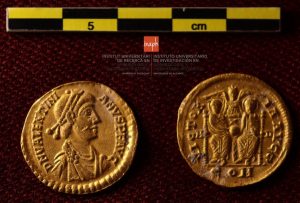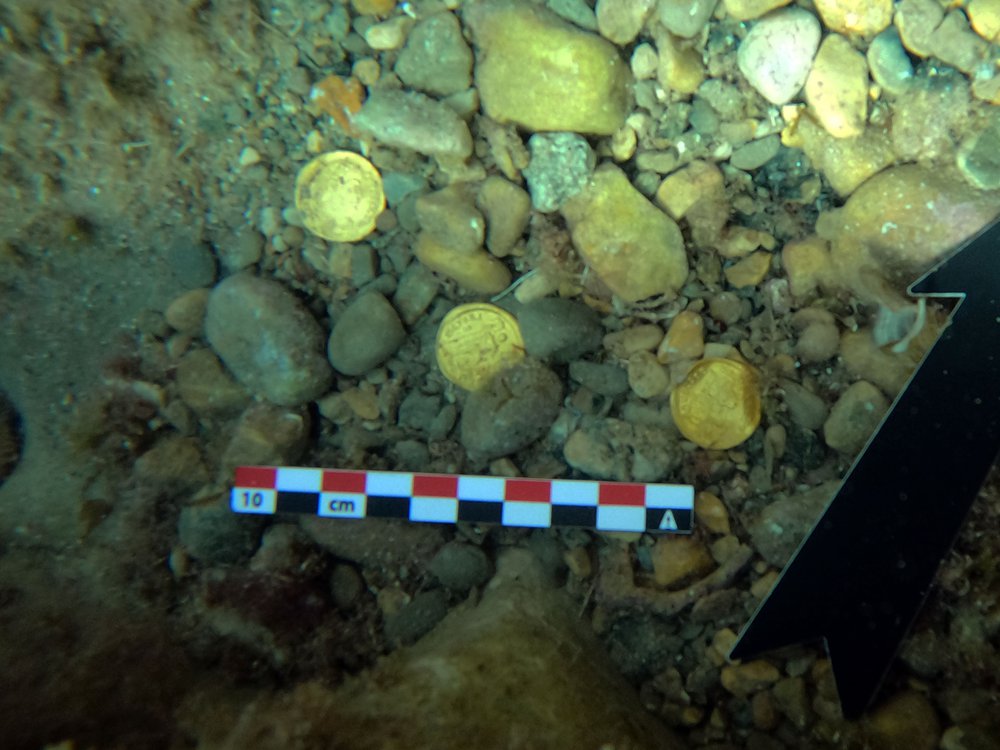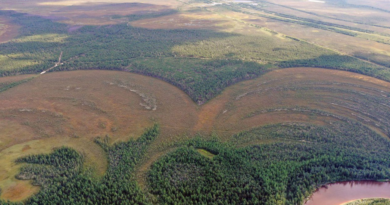In Spain, a group of amateur divers discovered a trove of 53 Roman gold coins.
Last month, two guys snorkelling off the shore of Spain’s Mediterranean coast with their families discovered a cache of Roman coins that turned out to be one of the largest of its sort ever unearthed in Europe.
According to Rafa Burgos of El Pas, the gold coins date from the fourth to the fifth century C.E. Luis Lens and César Gimeno, brothers-in-law, spent two hours using the corkscrew from a Swiss Army knife to extract eight coins from a rock fissure approximately 20 feet underwater in Portitxol Bay.
They afterwards contacted local authorities and returned with underwater archaeologists from Xàbia, Alicante University (UA), and the Spanish Civil Guard. The crew eventually recovered 53 coins, 3 nails, and several lead shards that were most likely originally part of the hoard’s chest.
“It’s incredible,” Lens says to El Pas. “Finding a treasure is every child’s dream.”

According to CNN’s Jack Guy, the coins are in such pristine shape that experts were able to decipher the inscriptions on all but one of them. Valentinian I (3 coins), Valentinian II (7 coins), Theodosius I (15 coins), Arcadius (17 coins), and Honorius (18 coins) were among the Roman rulers portrayed (10 coins). The reigns of these emperors lasted from 364 to 423 C.E.
“It’s really significant,” says UA historian Jaime Molina Vidal, who oversaw the underwater research. “It’s really valuable.”
According to Molina, the coins were most likely concealed on purpose rather than lost in a shipwreck. A rich local landowner may have hidden them away to keep them safe from intruders. During the fifth century C.E., “barbarian” tribes such as the Alans, Suevi, and Vandals marched on Hispania (now Spain and Portugal), taking advantage of the power vacuum left by the collapsing Western Roman Empire.
“[T]he cities were in decay, and authority had migrated to the big Roman villas, to the countryside,” Molina explains to El Pas. “Trade had been stifled, and the sources of wealth had shifted to agriculture and livestock.”
According to Molina, the owner of the coins was most likely unable to utilise them as cash due to the chaotic conditions but wanted to save them for the future. The person allegedly carried the money out on a boat and sank them in the water, but they perished before they could recover their buried wealth.
According to UA, the coins will be restored and shown in the Soler Blasco Archaeological and Ethnographic Museum in Xàbia. The Valencian government has allocated around $21,000 for additional underwater excavations in the region.




